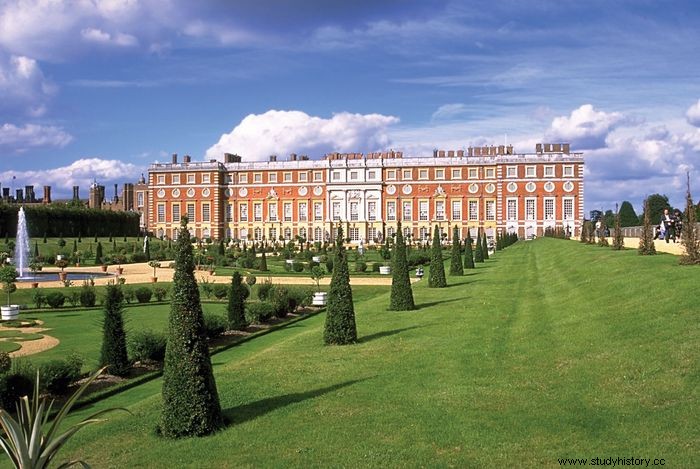Middlesex , historic southeast county England , with central London north of the Thames and surrounding areas to the north and west. Most of Middlesex has been 1965 part of for management purposes Greater London .

The The Thames was key to the history of Middlesex. From about 8000 v . Chr . Use traders and settlers the Thames as a waterway. During the Iron Age (ca. 500 BC Chr. ) There was Settlements at Brentford and Heathrow. In the 1st century v. Chr. Had each other Belgian tribes settled in south-east England, and Middlesex belonged to Catuvellauni territory. The Romans established outposts at Staines and Brentford. In the early 5th century ce the Saxons began to colonize the area. Situated between East and West Saxony, the region soon received its modern name (meaning "Middle Saxony"). The earliest written record of this is in the form of Middelseaxan in a charter of 704.
Middlesex has been dominated from the start by the City of London , which gained the power to appoint the county sheriff in the 12th century. For centuries it was the retreat of kings and wealthy Londoners Merchants. The most prominent building is the Royal Palace of Hampton Court ; Other villas are Osterley, Syon and Swakeleys. In the early modern period, the urban area of London expanded beyond the boundaries of the City of London to include parts of Middlesex, such as what are now the Boroughs of London Tower Hamlets , Westminster , Camden and Islington . Until the late 19th century, London was on den throughout southeastern Middlesex grown .
In 1888 the new county of London took over the administration of 130 square kilometers of Middlesex with a population of 2.5 million, and the new administrative region of Middlesex ruled the remaining territory. The county acquired its own sheriff, and the location of its traditional courthouse at Parliament Square in Westminster was believed to still be in the county of Middlesex for peace meetings.
During the early 20th century, suburban London expanded into most of Middlesex. A new metropolitan area, Greater London, was formed on April 1, 1965 and named 1963 The London Government Act covered most of the Middlesex area as well as parts of the neighboring counties. Outer boroughs of London established in whole or in part by former Middlesex authorities include Hounslow , Hillingdon , Ealing , Brent , Harrow , Haringey , Enfield , Richmond upon Thames and Barnet . The inner London boroughs of Camden, Hackney , Hammersmith and Fulham , Islington, Kensington and Chelsea Tower Hamlets, Westminster and the City of London are also within the boundaries of the historic county of Middlesex. While most of Middlesex is in the Greater London metropolitan area, the boroughs of Staines and Sunbury-on-Thames are in the borough Surrey and in the Potters Bar in Hertfordshire . Under the The Administration of Justice Act (1964) from the London borough of Middlesex was considered a county for legal reasons. The Middlesex name continues to be used for postal districts and in the names of many district institutions and organizations.
